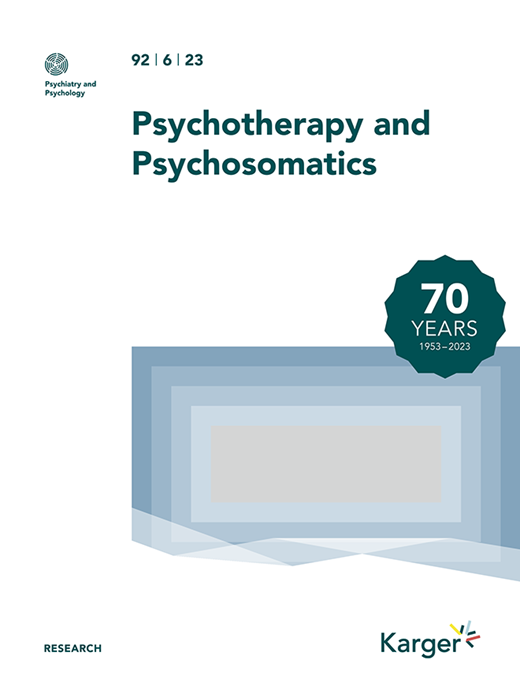研究人员冥想练习预测儿童/青少年正念干预的有效性:一项荟萃分析。
IF 17.4
1区 医学
Q1 PSYCHIATRY
引用次数: 0
摘要
正念已被证明有益于儿童和青少年。然而,正念干预(MBIs)治疗效果的预测因素尚不为人所知。目的检验MBIs对儿童/青少年的治疗效果;通过研究人员的冥想实践史(MPH)进行中庸性测试;比较MPH与其他研究和参与者水平变量的适度性。方法在PubMed和b谷歌Scholar中检索相关研究。纳入了青少年MBI临床试验的英文报告。研究者MPH通过在线调查收集,并分发给纳入研究的第一作者、最后作者和/或通讯作者。数据分析采用随机效应模型。我们进行了综合、调节和多重发表偏倚分析。治疗效果(Hedge’s g和r)是主要观察指标。二次分析包括通过研究和参与者水平特征进行的适度性测试,以及研究者的MPH。结果纳入107项研究,包括1393项统计数据,8,510名受试者。我们观察到小到中等显著综合效应大小(g = 0.33, CI: 0.27-0.39)。MBI效应与过去24小时内冥想分钟数(p=0.05)、过去7天内冥想次数(p30分钟(g=0.51[0.35-0.66])和超过7次(g=0.52[0.39-0.65])显著相关,且效应量最高。结论这些发现证实了MBIs对青少年的益处。我们提供了新的证据,更大的研究者MPH与更好的治疗结果显着相关。这一结果可能会引发一种思考和评估心理健康治疗文献的新方法,并可能激励在其他人群或干预措施中进行类似的研究。本文章由计算机程序翻译,如有差异,请以英文原文为准。
Investigator Meditation Practice Predicts Efficacy of Child/Adolescent Mindfulness-Based Interventions: A Meta-Analysis.
INTRODUCTION
Mindfulness has been shown to benefit children and adolescents. However, predictors of treatment effects of mindfulness-based interventions (MBIs) are less well-known.
OBJECTIVE
Test the treatment effect of MBIs in children/adolescents; test for moderation by meditation practice history (MPH) of the investigator(s); compare moderation by MPH to other study- and participant-level variables.
METHODS
Studies were identified in PubMed and Google Scholar. English-language reports of clinical trials testing an MBI in youth were included. Investigator MPH was collected via online survey distributed to the first, last, and/or corresponding authors of included studies. Data were analyzed using random-effects models. We preformed omnibus, moderator, and multiple publication bias analyses. Treatment efficacy (Hedge's g and r) was the primary outcome. Secondary analyses included tests for moderation by study- and participant-level characteristics, and investigator MPH.
RESULTS
Data were included from 107 studies, including 1,393 statistics and 8,510 participants. We observed a small-to-moderate significant omnibus effect size (g = 0.33, CI: 0.27-0.39). MBI effects were significantly associated with minutes investigators meditated in the past 24 hours (p=0.05) and number of times investigators meditated in the past 7 days (p<0.01), with those meditating >30 minutes (g=0.51 [0.35-0.66]) and more than 7 times (g=0.52 [0.39-0.65]), respectively, displaying the highest effect sizes.
CONCLUSION
These findings confirm the benefit of MBIs in youth. We provide novel evidence that greater investigator MPH is significantly associated with better treatment outcomes. The results may invite a new way of thinking about and evaluating the mental health treatment literature and may motivate similar studies in other populations or interventions.
求助全文
通过发布文献求助,成功后即可免费获取论文全文。
去求助
来源期刊

Psychotherapy and Psychosomatics
医学-精神病学
CiteScore
29.40
自引率
6.10%
发文量
46
期刊介绍:
Psychotherapy and Psychosomatics is a reputable journal that has been published since 1953. Over the years, it has gained recognition for its independence, originality, and methodological rigor. The journal has been at the forefront of research in psychosomatic medicine, psychotherapy research, and psychopharmacology, and has contributed to the development of new lines of research in these areas. It is now ranked among the world's most cited journals in the field.
As the official journal of the International College of Psychosomatic Medicine and the World Federation for Psychotherapy, Psychotherapy and Psychosomatics serves as a platform for discussing current and controversial issues and showcasing innovations in assessment and treatment. It offers a unique forum for cutting-edge thinking at the intersection of medical and behavioral sciences, catering to both practicing clinicians and researchers.
The journal is indexed in various databases and platforms such as PubMed, MEDLINE, Web of Science, Science Citation Index, Social Sciences Citation Index, Science Citation Index Expanded, BIOSIS Previews, Google Scholar, Academic Search, and Health Research Premium Collection, among others.
 求助内容:
求助内容: 应助结果提醒方式:
应助结果提醒方式:


